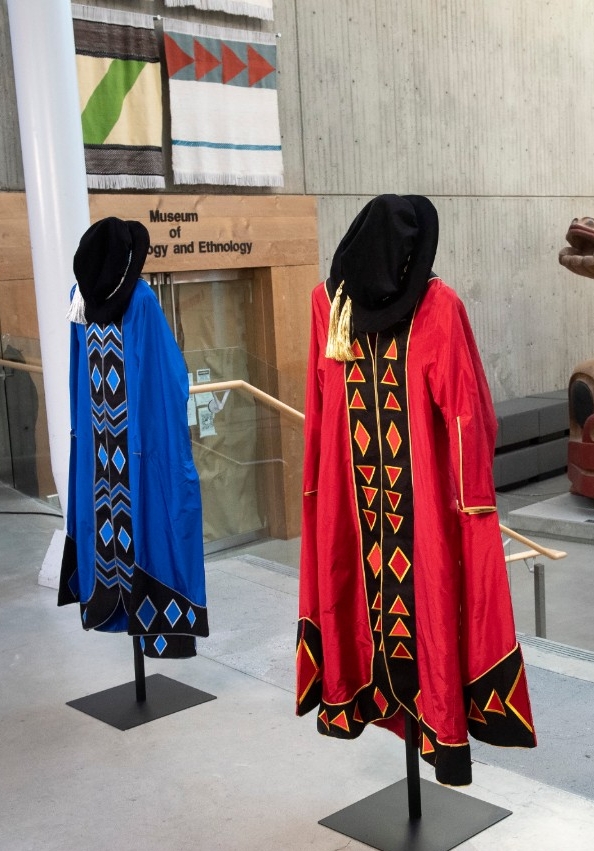About
History of academic dress
The regalia worn today by our graduates has a colourful history.
Regalia originated in the monasteries of the Middle Ages. At that time, university faculty were men of religion who wore the habit of their Order when teaching. Over time, their garments came to identify their university. In Europe, laymen did not commonly teach in universities until the 19th century. Only by 1858, for example, did British law no longer require university dons to be in holy orders. Nevertheless, professors continued to wear clerical garb, with modifications in cut and design.
Regalia colours often matched those of the university patron, or of the city in which the university was located; Simon Fraser regalia combines the red and royal blue of the Clan Fraser.
The degree hood was originally part of the monk’s habit - a carryall for food or other small items. Eventually, the hood became separate from the gown, variegated in colour, and emblematic of scholars and degrees from particular universities. Hoods in Canada and Europe are unique in design and colour to each degree and each university.
The history of the mortarboard worn by our Bachelors and Masters begins with high church dignitaries in the 16th century. These officials wore hats consisting of little more than a cap with a raised, squared crown. By the 18th century, the crown had evolved into a cloth-covered board, and the wearers into the deans and rectors of universities. The 19th century saw the top knob replaced by a tassel, and the cap become required student attire. Reminded of the square board masons used to hold mortar, students dubbed the headgear a “mortarboard”—college slang of the day.
Doctoral hats are patterned after the Florentine hats in the time of the Medici. Students purchased hats of the appropriate university colours when continuing with advanced studies after completing the Bachelors degree.
Chancellor & President and Vice-Chancellor regalia
In early 2020, following on the Calls to Action presented in SFU’s Aboriginal Reconciliation Council report, SFU undertook to renew the President and Chancellor’s regalia with a design that would respectfully honour the first peoples and the traditional lands on which the SFU Burnaby Campus resides.
The motifs that appear on the regalia were chosen and designed by Hereditary Chief Janice George (Chepximiya Siyam') and Willard ‘Buddy’ Joseph (Skwetsimeltxw), of the Squamish Nation. Local designer, Beverli Barnes designed the gowns.
These motifs can also be seen on Newxniw’chet (The Teachings) Salish blankets that hang in SFU’s Saywell Hall Atrium. They represent the first peoples that lived on Burnaby Mountain and the food they harvested there. The motifs also represent leadership and nobility, adaptability, the past and the present. Arranged on the gowns in contemporary colours and fabric, the patterns evoke the style of a traditional Salish blanket.
“The Salish blanket, worn as a ceremonial robe, is an object of extraordinary complexity. Said to exist in the supernatural realm, these robes are made manifest in the natural world through Ancestral guidance. Wearing a woven blanket during ritual is transformative, moving the individual from the mundane to a sacred space. They are protective garments that at times of great changes in a person’s life… offer emotional strength. The object, the maker, the wearer, and the community itself are bound and transformed through the creation and use of the Salish blanket.”
~ Salish Blankets - Robes of Protection and Transformation, Symbols of Wealth – p. XIII

